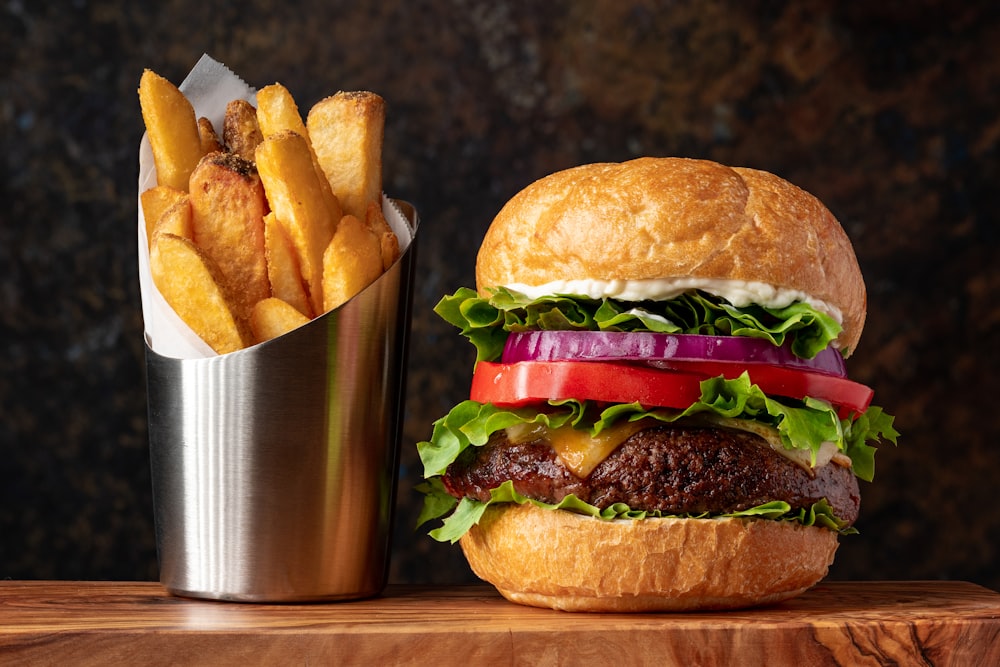The Journey of the Hamburger: An American Icon with Global Roots

Introduction:
Dive into the fascinating history of the hamburger, a culinary staple that has captured hearts and taste buds around the world. From its humble beginnings to its status as a global icon, the hamburger's journey is a tale of innovation, cultural exchange, and gastronomic delight.
The Origins: A Global Prelude
Long before the hamburger became synonymous with fast food, its ancestors were being prepared on the vast steppes of Central Asia. The Mongol horsemen, under the leadership of Genghis Khan, would place pieces of lamb or mutton under their saddles as they rode into battle. The pounding of the horseback and the meat's marination in its own juices tenderized it, creating a meal that was both practical and nourishing. This method of preparing meat made its way to Moscow with the Golden Horde in the late Middle Ages and was eventually refined in Germany, particularly in the port city of Hamburg, where the Hamburg steak, a seasoned ground beef patty, became a popular dish.
German immigrants brought this culinary tradition to the United States in the 19th century, where it was served as a steak. However, the transformation from a Hamburg steak to the modern hamburger is a story of American ingenuity and adaptation, reflecting the country's melting pot of cultures and the rise of a fast-paced lifestyle.
The Birth of the Modern Hamburger
The hamburger's invention is a hotly contested topic, with several individuals and locales claiming the title. Perhaps the most enduring of these stories is that of Louis Lassen, who, in 1900, at his small New Haven luncheonette, Louis’ Lunch, placed a ground beef steak between two slices of bread for a busy office worker seeking a quick meal. This moment, though simple, marked the birth of the hamburger as we know it.
Yet, the narrative of the hamburger's invention doesn't stop there. The Menches brothers, during a fair in Hamburg, New York, purportedly created the dish in 1885 when they ran out of pork for their sandwiches and used ground beef instead. Similarly, Fletcher Davis of Athens, Texas, claimed to have served a ground beef sandwich at his café in the late 1880s before introducing it at the 1904 World's Fair in St. Louis.
The 1904 World's Fair, regardless of its role in the hamburger's invention, played a crucial part in popularizing the dish. The fair was a showcase of innovation and culture, drawing millions of visitors from across the globe. Among the many culinary delights, the hamburger stood out for its simplicity and convenience, encapsulating the burgeoning fast-paced American lifestyle.
The Hamburger Goes Mainstream
The transformation of the hamburger from a novelty to a staple of American cuisine can largely be credited to White Castle, the first fast-food hamburger chain. Founded in 1921 by Billy Ingram and Walter Anderson in Wichita, Kansas, White Castle introduced the concept of the assembly line in food service, ensuring consistency, efficiency, and affordability. Their success laid the groundwork for the fast-food industry, changing the way Americans, and eventually the world, consumed meals.
The post-World War II era saw the rise of McDonald's, which revolutionized the fast-food industry with its Speedee Service System. The McDonald brothers' vision of a restaurant that offered a limited menu, focused on hamburgers, fries, and shakes, prepared quickly, and sold at a low price, was revolutionary. Ray Kroc, who joined the company in 1954 and later purchased it, expanded McDonald's across the nation and globally, making the hamburger an international symbol of American culture.
Cultural Impact and Global Spread
- An American Icon: Examine how the hamburger came to symbolize American culture and cuisine both domestically and internationally.
- Global Variations: Highlight the global variations of the hamburger, adapting to local tastes and cultural preferences worldwide.
The Hamburger in Modern Times
- Gourmet and Artisanal Burgers: Discuss the rise of gourmet and artisanal burgers in the 21st century, with chefs and restaurants elevating the humble hamburger to new culinary heights.
- Health and Sustainability: Address the modern challenges of health-conscious eating and sustainability, leading to the introduction of plant-based burgers and eco-friendly practices in hamburger production.
The Future of the Hamburger
- Innovation in the Burger World: Speculate on the future trends in the hamburger industry, from lab-grown meat to new culinary fusions.
- The Hamburger's Enduring Legacy: Reflect on the hamburger's enduring appeal and its ability to adapt to changing tastes and societal trends.
Conclusion
The hamburger's journey from the steppes of Central Asia to the global stage is a testament to its versatility and universal appeal. It has evolved from a practical meal for warriors to a gourmet dish with endless variations, reflecting local tastes and global trends. As we look to the future, the hamburger continues to adapt, embodying the innovation and resilience at the heart of culinary tradition. Whether served in a diner, a high-end restaurant, or a fast-food chain, the hamburger remains a beloved icon, a simple pleasure that transcends cultural and socioeconomic boundaries.




































